Caring for myrtle at home. Subtleties of content
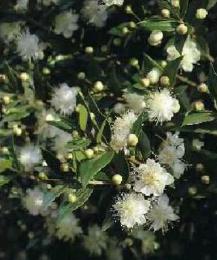
Myrtle belongs to evergreen shrubs. The myrtle tree is a symbol of a successful marriage, so it is given to the bride as a wedding gift. Caring for myrtle at home requires careful handling.
Content:
Description
This plant with small ovoid shiny leaves and small white flowers, whose homeland is the Mediterranean, bears dark blue berries. According to ancient legend, Adam brought myrtle from Paradise.
Translated from Greek, “myrtle” means “balm,” so since ancient times people have valued myrtle for its medicinal and decorative qualities - the flowers and leathery leaves of myrtle are rich in essential oils, dried leaves and fruits are used as a spice. By the way, the spice clove is a product of one of the varieties of myrtle.
To reduce colds in children, they are placed on the windowsills in the children's room. Its phytoncides are very useful, and the smell is very pleasant. There is evidence that myrtle reduces allergic reactions in children.
Caring for myrtle at home
Caring for myrtle at home is relatively simple. In residential conditions, the common myrtle (the most common type) begins to bloom at about 4-5 years. It tolerates pruning well, which makes it possible to give the crown the desired shape.
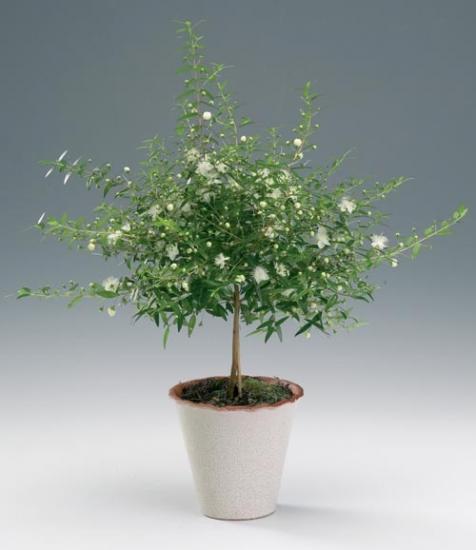
Myrtle needs a microclimate with high humidity, for which it needs to be sprayed regularly.It is better to water with soft, settled water. There is no need to soften the water on purpose, but myrtle does not tolerate lime in the soil at all. It is also not very forgiving of the forgetfulness of the owners, so it is simply necessary to monitor watering.
In the warm season, caring for myrtle at home consists of creating a moderate temperature regime (18–23 degrees), providing bright light with shading from the heat. If possible, in the warm season, it is advisable to place myrtle in an open place. Watering is regular, but not abundant. Periodically, he can be given a shower. Prune and replant in spring no more than once every 2 years.
During the winter (dormant period), caring for myrtle at home includes limited watering, but there is no need to dry out the soil. The plant is moved to a cooler, bright place with a temperature of up to 8 degrees, otherwise the myrtle will begin to shed its leaves. But there is no need to worry too much, since in the spring the myrtle will restore its foliage cover. Thus, myrtle has a pronounced dormant period of one and a half to three months.
Even short-term drying out is unacceptable for the tree. If it suddenly happens that the soil in the pot is dry, immerse it in water. Myrtle also does not like stagnation of water in the pan, as well as drying. But it easily tolerates drafts, so it can easily be placed on a kitchen windowsill, where it is often ventilated. From the air flow, it further releases beneficial phytoncides, which actively destroy pathogenic microbes.
Haircut and pinching
myrtle tree can be formed, giving an original shape. But it’s better not to expose the trunk too much; it’s not too strong. Therefore, leave as many side shoots as possible.But if the goal of cultivation is flowering, then you should not get carried away with pinching, otherwise flower buds will not form.
However, it is still better to carry out the shaping. To do this, decide on the desired type of tree. You can form a very squat, thick cushion, or, on the contrary, you can make an airy, lightened crown on a trunk. The desired appearance can be achieved very quickly, in just a couple of years.
But remember that any pruned specimens need to be fed. Various fertilizers for indoor plants without chlorine are suitable for feeding.
Varieties
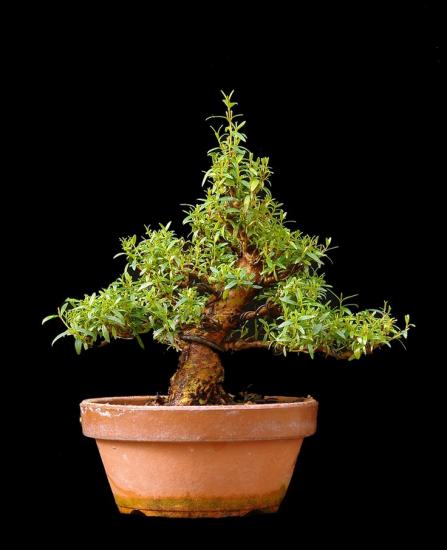
Now there is a very good selection of varieties and hybrids. There are even modern varieties with variegated leaf colors, different fruit colors, as well as double flowers. Double flowers at Flora Pleno. Variegata foliage in Variegata and Tarentina Variegata varieties. Lush growth in La Clape (purple fruits) and La Clape Blanc (white berries). Dwarfs with small foliage - Microphylla, Tarentina.
Reproduction
Like many varietal plants, myrtle It is better to propagate by cuttings. This way you will retain maternal characteristics. When propagating by seed, the likelihood of maintaining varietal characteristics is sharply reduced.
Cuttings are taken from a healthy plant in a semi-lignified form. They are rooted under film or in a greenhouse. For better root formation, stimulants (kornevin, heteroauxin) are used. The cut cuttings are stuck into the prepared soil at three nodes at an angle of 45-50 degrees. During the rooting period, the humidity of the substrate is monitored especially carefully.
So, a feature of caring for myrtle at home is the constant maintenance of soil and air humidity, and a short period of rest in winter.But it has a lot of other advantages that will more than repay your care for it, and will bring a healthy environment and “balsamic” peace to your home.

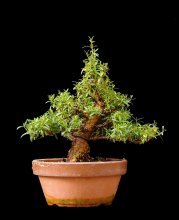
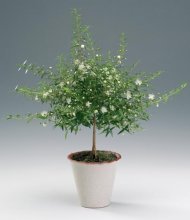
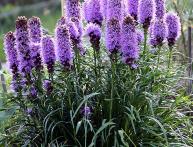



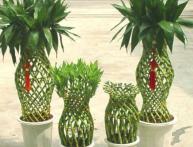

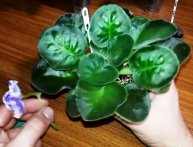
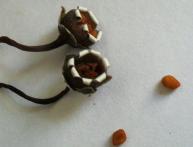
Comments
I liked the plant, it’s unusual, I haven’t seen anyone I know at home yet. I took note and will try to plant it. It looks beautiful and I want some variety, something new. I liked the fact that you can give it the desired shape and it will look neat!
Good day. The plant is two years old, standing in the kitchen on the windowsill, quite cool, constantly shedding leaves, mostly in the middle of the sleepy stem. That is, the ends are fluffy, and the stems in the middle of the entire plant are bare. Tell me, please, what could be the reason.